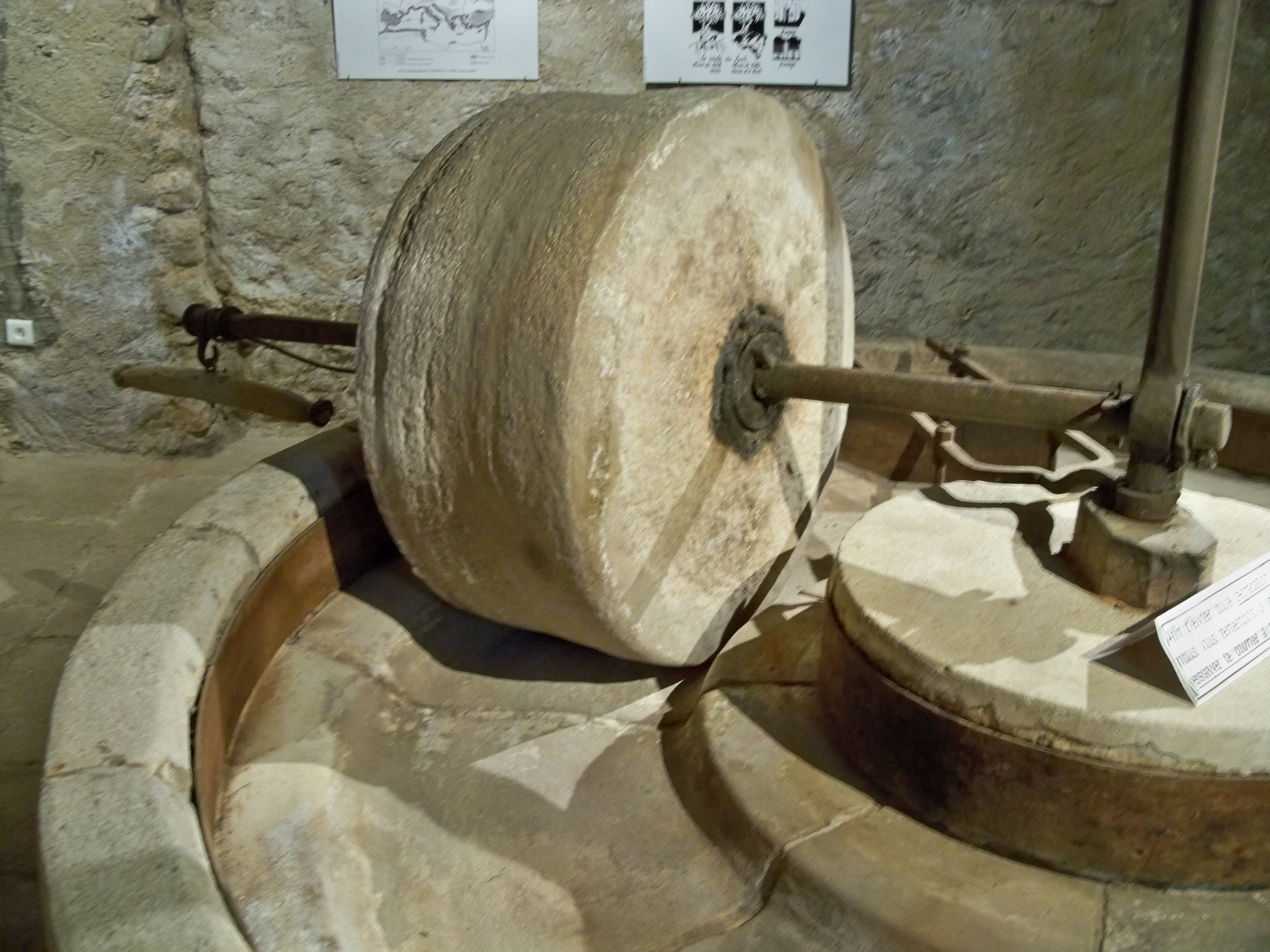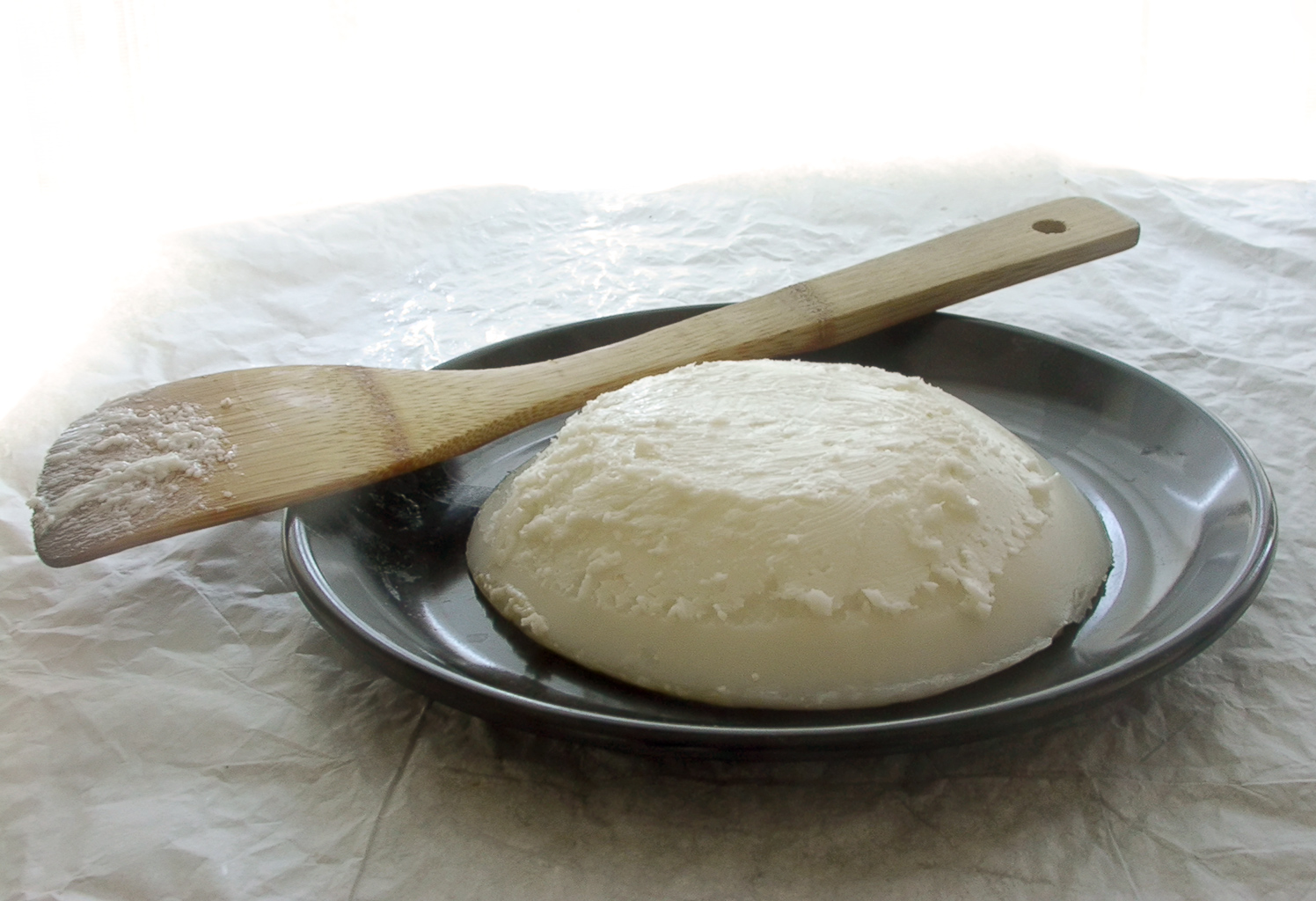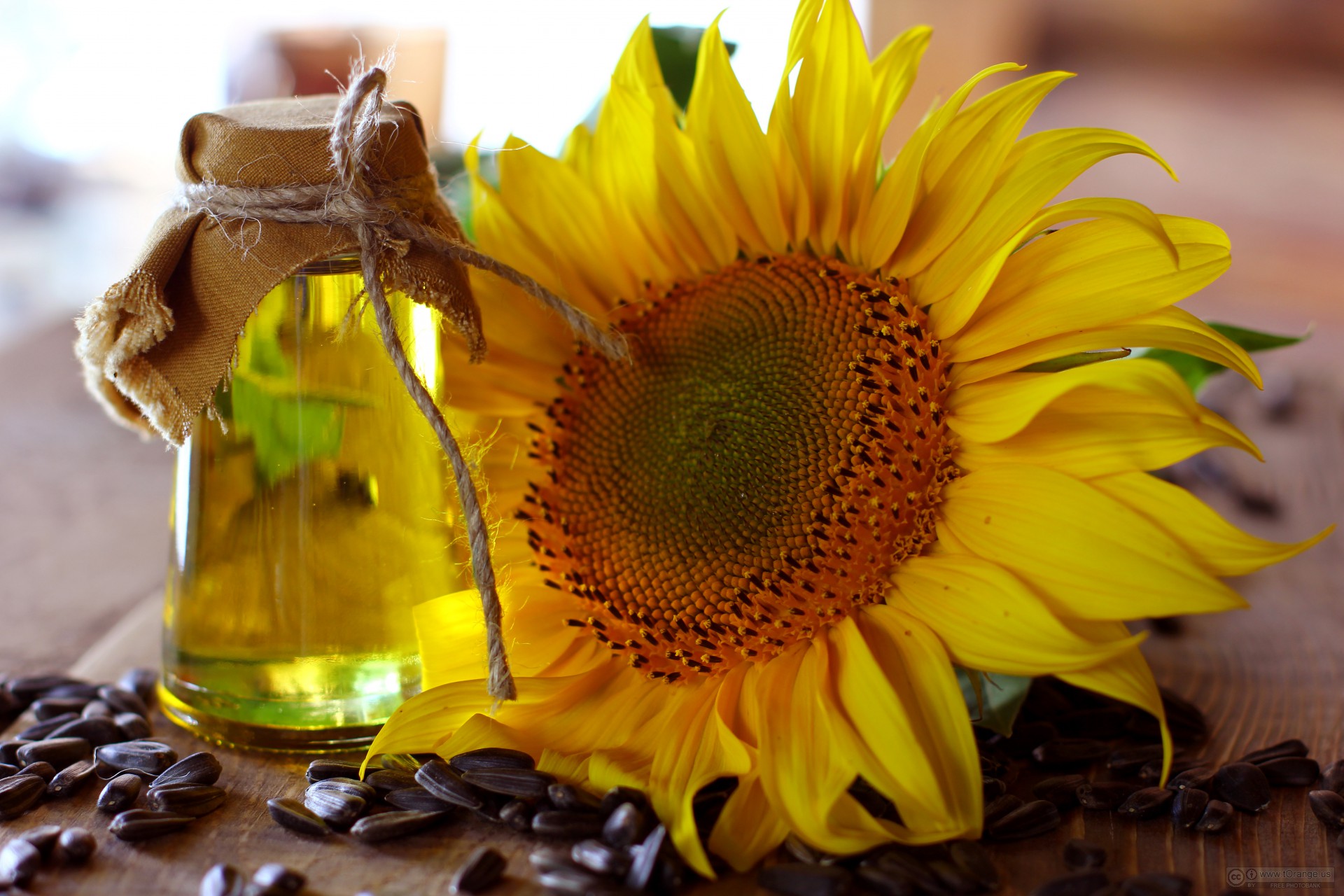|
Oleate
Oleic acid is a fatty acid that occurs naturally in various animal and vegetable fats and oils. It is an odorless, colorless oil, although commercial samples may be yellowish due to the presence of impurities. In chemical terms, oleic acid is classified as a monounsaturated omega-9 fatty acid, abbreviated with a lipid number of 18:1 ''cis''-9, and a main product of Δ9-desaturase. It has the formula . The name derives from the Latin word ''oleum'', which means oil. It is the most common fatty acid in nature. The salts and esters of oleic acid are called oleates. It is a common component of oils, and thus occurs in many types of food, as well as in soap. Occurrence Fatty acids (or their salts) often do not occur as such in biological systems. Instead fatty acids such as oleic acid occur as their esters, commonly triglycerides, which are the greasy materials in many natural oils. Oleic acid is the most common monounsaturated fatty acid in nature. It is found in fats (triglycerid ... [...More Info...] [...Related Items...] OR: [Wikipedia] [Google] [Baidu] |
Stearoyl-CoA 9-desaturase
Stearoyl-CoA desaturase (Δ-9-desaturase or SCD-1) is an endoplasmic reticulum enzyme that catalyzes the rate-limiting step in the formation of monounsaturated fatty acids (MUFAs), specifically oleate and palmitoleate from stearoyl-CoA and palmitoyl-CoA. Oleate and palmitoleate are major components of membrane phospholipids, cholesterol esters and alkyl-diacylglycerol. In humans, the enzyme is present in two isoforms, encoded respectively by the ''SCD1'' and ''SCD5'' genes. Stearoyl-CoA desaturase-1 is a key enzyme in fatty acid metabolism. It is responsible for forming a double bond in stearoyl-CoA. This is how the monounsaturated fatty acid oleic acid is produced from the saturated fatty acid, stearic acid. A series of redox reactions, during which two electrons flow from NADH to flavoprotein cytochrome b5, then to the electron acceptor cytochrome b5 as well as molecular oxygen introduces a single double bond within a row of methylene fatty acyl-CoA substrates. The complex ... [...More Info...] [...Related Items...] OR: [Wikipedia] [Google] [Baidu] |
Fatty Acid
In chemistry, in particular in biochemistry, a fatty acid is a carboxylic acid with an aliphatic chain, which is either saturated and unsaturated compounds#Organic chemistry, saturated or unsaturated. Most naturally occurring fatty acids have an Branched chain fatty acids, unbranched chain of an even number of carbon atoms, from 4 to 28. Fatty acids are a major component of the lipids (up to 70% by weight) in some species such as microalgae but in some other organisms are not found in their standalone form, but instead exist as three main classes of esters: triglycerides, phospholipids, and cholesteryl esters. In any of these forms, fatty acids are both important diet (nutrition), dietary sources of fuel for animals and important structural components for cell (biology), cells. History The concept of fatty acid (''acide gras'') was introduced in 1813 by Michel Eugène Chevreul, though he initially used some variant terms: ''graisse acide'' and ''acide huileux'' ("acid fat" and "oi ... [...More Info...] [...Related Items...] OR: [Wikipedia] [Google] [Baidu] |
Triglyceride
A triglyceride (from '' tri-'' and '' glyceride''; also TG, triacylglycerol, TAG, or triacylglyceride) is an ester derived from glycerol and three fatty acids. Triglycerides are the main constituents of body fat in humans and other vertebrates as well as vegetable fat. They are also present in the blood to enable the bidirectional transference of adipose fat and blood glucose from the liver and are a major component of human skin oils. Many types of triglycerides exist. One specific classification focuses on saturated and unsaturated types. Saturated fats have ''no'' C=C groups; unsaturated fats feature one or more C=C groups. Unsaturated fats tend to have a lower melting point than saturated analogues; as a result, they are often liquid at room temperature. Chemical structure The three fatty acids substituents can be the same, but they are usually different. The positions of the three fatty acids are specified using stereospecific numbering as sn-1, sn-2, and sn- ... [...More Info...] [...Related Items...] OR: [Wikipedia] [Google] [Baidu] |
Olive Oil Acidity
Olive oil contains small amounts of free fatty acids (meaning not attached to other fatty acids in the form of a triglyceride). Free acidity is an important parameter that defines the quality of olive oil. It is usually expressed as a percentage of oleic acid (the main fatty acid present in olive oil) in the oil. As defined by the European Commission regulation No. 2568/91 and subsequent amendments, the highest quality olive oil (extra-virgin olive oil) must feature a free acidity lower than 0.8%. Virgin olive oil is characterized by acidity between 0.8% and 2%, while lampante olive oil (a low quality oil that is not edible) features a free acidity higher than 2%. The increase of free acidity in olive oil is due to free fatty acids that are released from triglycerides. Free fatty acids formation The presence of free fatty acids in olive oil is caused by a reaction (lipolysis) started when lipolytic enzymes (that are normally present in the pulp and seed cells of the olive) come ... [...More Info...] [...Related Items...] OR: [Wikipedia] [Google] [Baidu] |
Lard
Lard is a Quasi-solid, semi-solid white fat product obtained by rendering (animal products), rendering the adipose tissue, fatty tissue of a domestic pig, pig.Lard entry in the online ''Merriam-Webster Dictionary''. Accessed on 2020-07-05. It is distinguished from tallow, a similar product derived from fat of cattle or sheep. Lard can be rendered by steaming, boiling, or dry heat. The culinary qualities of lard vary somewhat depending on the origin and processing method; if properly rendered, it may be nearly odorless and tasteless.E. S. Clifton, Joseph Kastelic, and Belle Lowe (1955): ''Relationships between Lard Production Methods, Volumes of Production, Costs and Characteristics of Lard Produced in Selected Packing Plants''. Research Bulletin 422, Iowa State College Experiment Station, US Department of Agriculture. ... [...More Info...] [...Related Items...] OR: [Wikipedia] [Google] [Baidu] |
Karuka
The karuka (''Pandanus julianettii'', also called karuka nut and ''Pandanus'' nut) is a species of tree in the screwpine family (Pandanaceae) and an important regional food crop in New Guinea. The nuts are more nutritious than coconuts, and are so popular that villagers in the New Guinea Highlands, highlands will move their entire households closer to trees for the harvest season. Description The species was originally Species description, described in 1908 by Ugolino Martelli from only a few drupes in the collections of the Royal Botanic Gardens, Kew He was hesitant to describe it as a new species from only that, but the characteristics were so salient he published his description. The tree is dioecious (individual plants either have male flowers or female ones), with male trees uncommon compared to females. It reaches in height, with a grey Trunk (botany), trunk of in diameter and supported by prop roots or flying buttress roots up to forty feet (twelve meters) in length ... [...More Info...] [...Related Items...] OR: [Wikipedia] [Google] [Baidu] |
Poppyseed Oil
Poppyseed oil (also poppy seed oil and poppy oil) is an edible oil obtained from poppy seeds (specifically seeds of ''Papaver somniferum'', the opium poppy). Poppy seeds yield 45–50% oil. Like poppy seeds, poppyseed oil is highly palatable, high in vitamin E, and has no narcotic properties. Poppy seeds are especially high in tocopherols other than vitamin E (alpha-tocopherol). Compared to other vegetable oils, poppyseed oil has a moderate amount of phytosterols: higher than soybean oil and peanut oil, lower than safflower oil, sesame oil, wheat germ oil, corn oil, and rice bran oil. It has little or no odor and a pleasant taste, and it is less likely than some other oils to become rancid. Uses The oil is sometimes used as a cooking oil; it is also used for moisturizing skin. Its primary use, however, is in the manufacture of paints, varnishes, and soaps. Poppyseed oil is a drying oil. In oil painting, the most popular oil for binding pigment, thinning paint, a ... [...More Info...] [...Related Items...] OR: [Wikipedia] [Google] [Baidu] |
Sesame Oil
Sesame oil is an edible vegetable oil derived from sesame seeds. The oil is one of the earliest-known crop-based oils. Worldwide mass modern production is limited due to the inefficient manual harvesting process required to extract the oil. Oil made from raw seeds, which may or may not be cold-pressed, is used as a cooking oil. Oil made from toasted seeds is used for its distinctive nutty aroma and taste, although it may be unsuitable for frying, which makes it taste burnt and bitter. Manufacture Manufacturing process Sesame seeds are protected by a capsule which bursts only when the seeds are completely ripe, a process called dehiscence. The dehiscence time tends to vary, so farmers cut plants by hand and place them together in an upright position to continue ripening, until all the capsules have opened. Tanzania remains the largest producer of sesame oil and also dominates the global consumption of this product. The African and Asian regions constitute the fastest-de ... [...More Info...] [...Related Items...] OR: [Wikipedia] [Google] [Baidu] |
Sea Buckthorn Oil
Sea buckthorn oil is a red-orange oil derived from sea buckthorn plants. The most commonly used species for this purpose is ''Hippophae rhamnoides''. Species belonging to this genus accumulate lipids in the mesocarp (the fruit pulp), so the oil can be extracted from either the seeds or the pulp. The resulting oils (seed oil and pulp oil, also called fruit or berry oil) are used in dietary supplements, nutraceuticals, cosmetics and skin care products. Chemical constituents Oil content in seeds of sea buckthorn is on average 7–11% while oil content of the fruit pulp is around 1.5–3% (per fresh weight). Seed oil is characterized by high contents of polyunsaturated fatty acids while pulp oil contains monounsaturated fatty acids and carotenoids. Both oils also contain dense amounts of tocopherols, tocotrienols and plant sterols. Fatty acids Oils from sea buckthorn seeds and fruit pulp differ considerably in fatty acid composition. While linoleic acid and α-linolenic ac ... [...More Info...] [...Related Items...] OR: [Wikipedia] [Google] [Baidu] |
Grape Seed Oil
Grape seed oil (also called grapeseed oil or grape oil) is a vegetable oil derived from the seeds of grapes. Grape seeds are a winemaking by-product, and oil made from the seeds is commonly used as an edible oil. Description Grape seed oil has a moderately high smoke point of approximately . The oil has a light taste and a high polyunsaturated fat content, making it suitable for use in salad dressings, mayonnaise and as a base for oil infusions of garlic, rosemary, or other herbs or spices. It is widely used in baked goods, pancakes, and waffles. It is sprayed on raisins to help them retain their flavor. Uses Grapeseed oil may be used as a salad oil, massage oil, and in manufactured cosmetics or haircare products. Research A study of 21 grape cultivars showed variation of oil composition, especially for linoleic acid and tocopherols. Although grape seeds contain polyphenols, such as proanthocyanidins, grape seed oil contains negligible amounts of these ... [...More Info...] [...Related Items...] OR: [Wikipedia] [Google] [Baidu] |
Sunflower Oil
Sunflower oil is the non-volatile oil pressed from the seeds of the sunflower (''Helianthus annuus''). Sunflower oil is commonly used in food as a frying oil, and in cosmetic formulations as an emollient. Sunflower oil is primarily composed of linoleic acid, a polyunsaturated fat, and oleic acid, a monounsaturated fat. Through selective breeding and manufacturing processes, oils of differing proportions of the fatty acids are produced. The expressed oil has a neutral taste profile. The oil contains a large amount of vitamin E. Composition Sunflower oil is mainly a triglyceride. The British Pharmacopoeia lists the following profile: *Palmitic acid (saturated): 5% *Stearic acid (saturated): 6% *Oleic acid (monounsaturated omega-9): 30% * Linoleic acid (polyunsaturated omega-6): 59% Four types of sunflower oils with differing concentrations of fatty acids are produced through plant breeding and industrial processing: high-linoleic (conventional), high-oleic, mid- ... [...More Info...] [...Related Items...] OR: [Wikipedia] [Google] [Baidu] |
Macadamia Oil
Macadamia oil, also known as macadamia nut oil, is a non-volatile oil extracted from the nuts of the macadamia tree (''Macadamia integrifolia''), indigenous to Australia. This oil is used in culinary applications as a frying or salad oil, and in cosmetics for its emollient properties and as a fragrance fixative. Description Fruits ''Macadamia integrifolia'' is an Australian tree with holly-like leaves that grows well in a moist, organic soil and can withstand temperatures as low as −4.4 °C (24 °F). Seedlings bear in 5–7 years. The fruit is borne in a case enclosing an extremely hard spherical nut. The kernel is whitish, sweet and eaten raw or roasted. The flowers are white to cream and the leaves are in whorls of three. Propagation is by seed, grafting or air layering. It is grown commercially. Common names of the trees are the Australian nut or the Queensland nut. Species that are “smooth shelled macadamia” are called ''Macadamia integrifolia'' and “rough ... [...More Info...] [...Related Items...] OR: [Wikipedia] [Google] [Baidu] |





